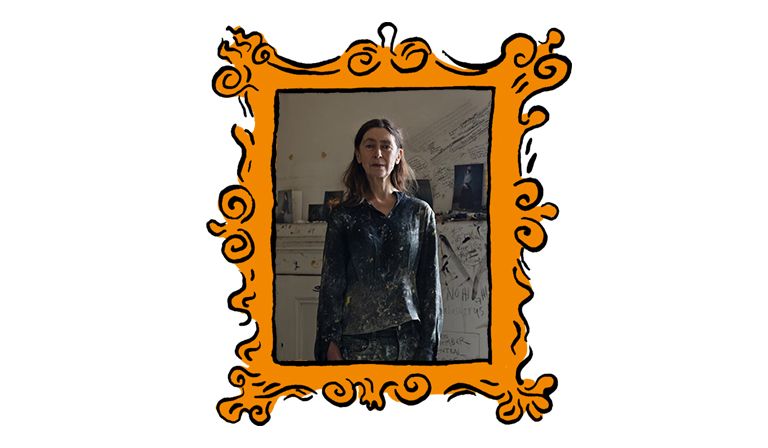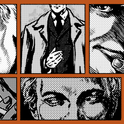This spring in London is Celia Paul season. We’ve seen the publication of a lavish monograph of her paintings by Mack Books, as well as two new exhibitions, one at Victoria Miro in the east end and another at Hazlitt Holland-Hibbert in St James’s. But what is it about this elegiac, spiritual painter—a woman so disconnected from the concerns of her peers that it can seem as if she belongs to another age entirely—that has made her so popular today?
In an era obsessed with the personal lives of cultural figures, part of Paul’s appeal is undoubtedly biographical. Her 2019 book, Self-Portrait, reflected on her tumultuous relationship with Lucien Freud, whom she met in 1978 when she was an 18-year-old art student at the Slade and he was in his fifties. Over the course of their relationship, Paul suffered various cruelties at the hands of her older, famous lover—and belittlement by his painter peers.
Self-Portrait saw Paul reborn, in her sixth decade, as a survivor of the misogynist British canon, a tragic muse who escaped her lot to become a celebrated painter in her own right. Yet as the title of her show “Ghosts” at Victoria Miro suggests, she is still not exactly emancipated. In what has become a key piece of Paul lore, she continues to live and paint in the flat overlooking the British Museum that Freud bought for her 1982; it is hard not to see his shadow hanging over the many paintings showing its spartan interior or the plaintive views from its windows. One of the works shown, Colony of Ghosts (2023), is even more explicit about this haunting presence: it depicts Freud sitting alongside fellow painters Francis Bacon, Frank Auerbach and Michael Andrews, all painted in a ghoulish green, like a group of spectral visitors who have arrived unbidden at her table in the middle of the night.
Paul’s connection to Freud and his ilk allows audiences to indulge in the popular game of biographical join-the-dots, the same pastime that so enraptures fans of the Bloomsbury set. The other show at Hazlitt Holland-Hibbert, “Diaries”, facilitates just this type of cultural engagement, presenting Paul’s works on paper as journal entries or windows on to her life. A morbid yet ethereal painting of her sisters all dressed in white gowns, like a choir of angels stranded in a palliative care ward, is accompanied by a note explaining that it was made on 11th November 2024, the day Auerbach died—a dear friend of Paul’s after whom she named her son.
The framing of Paul as a living piece of British art history has clearly proved ensorcelling. Yet is should not distract from the fact that she is also a tremendous painter, capable of using the prosaic and the painful as a conduit for reaching towards a kind of tragic sublime. A painting of a lonely chair, flooded with golden light; a tree so laden with yellow paint that it appears to be weeping sunbeams: often the melancholy in her work is so powerful, so abundant, that it feels transcendent, even religious. This effect is likely the legacy of Paul’s upbringing in a family immersed in the Anglican faith. Rowan Williams, the former archbishop of Canterbury and Paul’s brother-in-law, contributes an essay to her monograph in which he compares her paintings to “confession” in the religious sense of “testifying to something that might cost one profoundly”.
It is this spiritual dimension of Paul’s painting, along with its disarming sincerity, that sets her apart from many of her contemporaries. (Strange to think she was a student in the same decade as the Young British Artists.) Indeed, many of her paintings could conceivably have been made any time during the past 100 years. There is no sense that Paul feels, as many artists do, that she must account for painting’s place in our hyper-connected digital age, or indeed for any of the major political issues of the day. Operating at their own slow and heavy pace, and utterly unselfconscious in their quest for profundity, her paintings create the conditions for the kind of contemplation that is often lacking in lives governed by screens.
In this regard, Paul offers the contemporary viewer something increasingly rare: a deep sense of relief. There is immense comfort to be taken in an artist whose work reminds us that our anxious and frantic present is a mere speck on the horizon of history. Paul may have gained wider appeal as a survivor of the 20th century, but she is also a custodian of a far older tradition. Her paintings evoke what are known in the Celtic tradition as “thin places”, where the boundaries between realms are weakened. On her canvases the past and the heavens, with all their attendant sorrows and joys, come flooding in.
What Celia Paul gives us
The artists is more popular than ever before. Perhaps because she and her work go against the grain of modern living
April 24, 2025

© Gautier Deblonde Courtesy the artist and Victoria Miro











